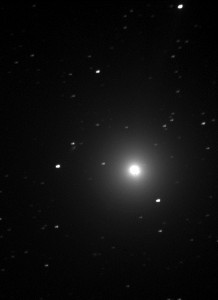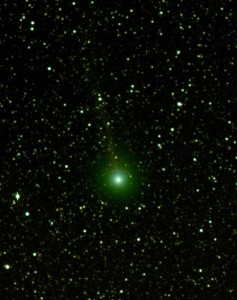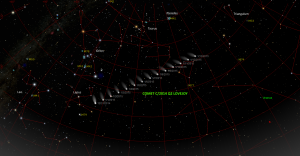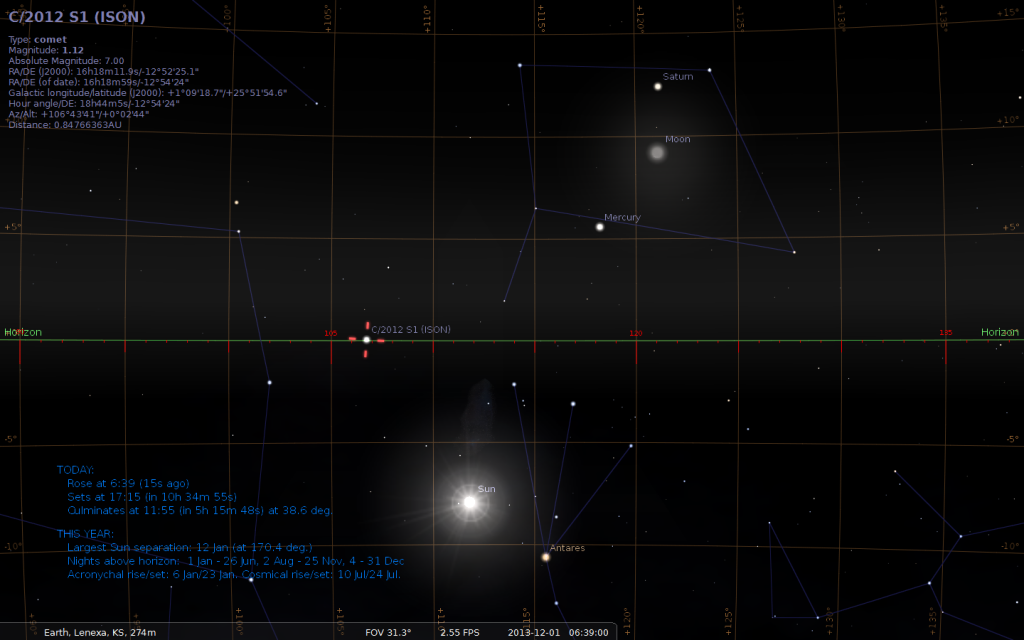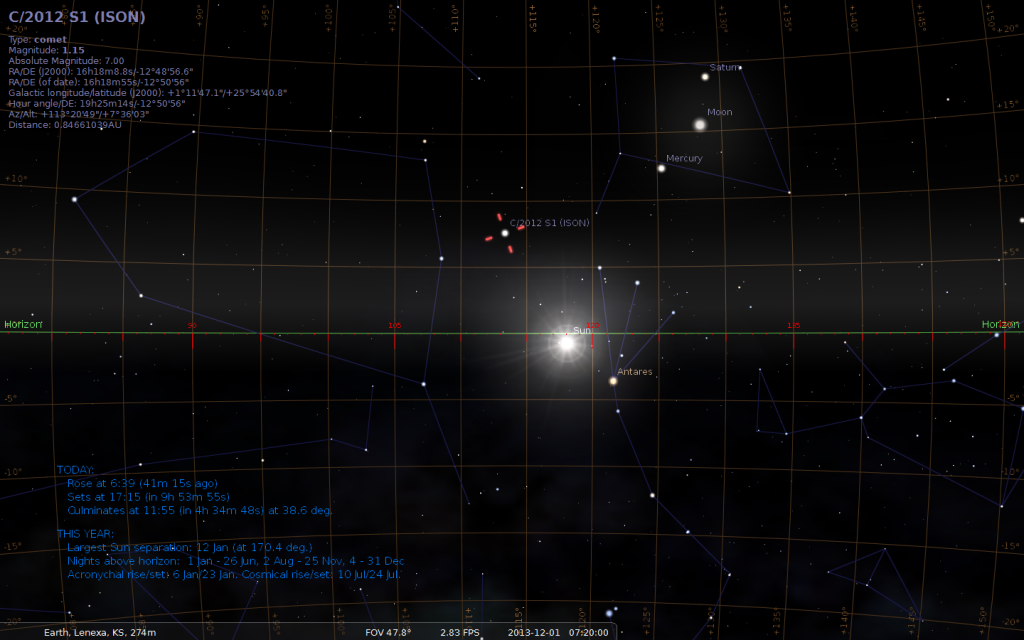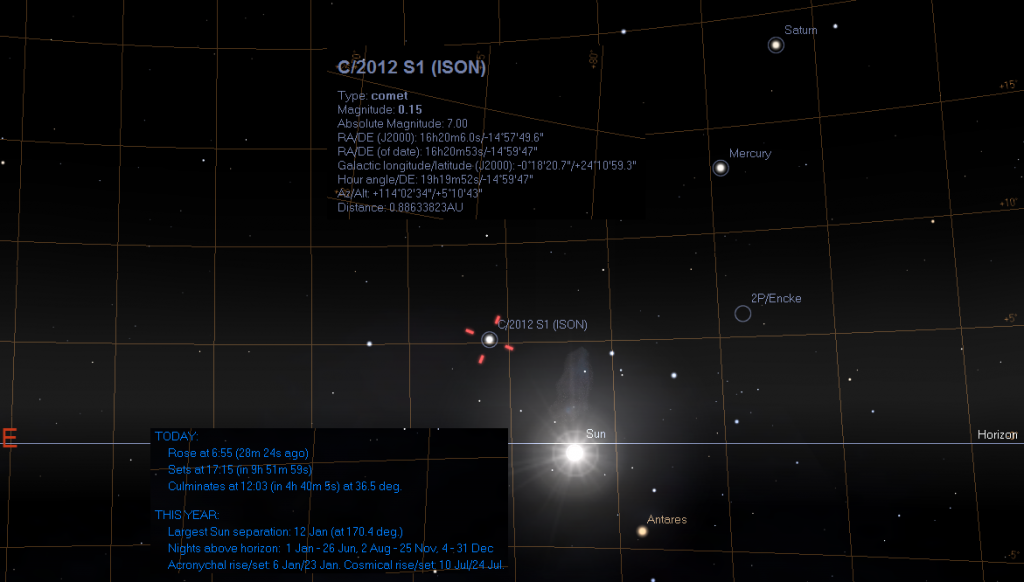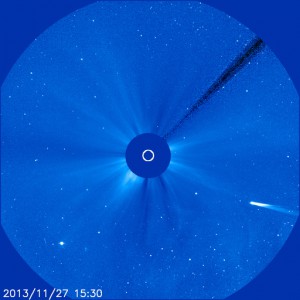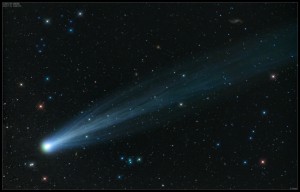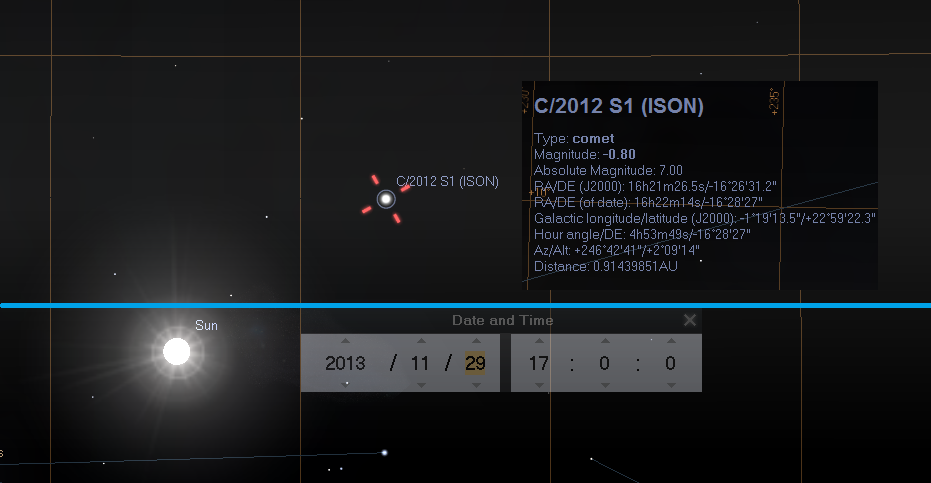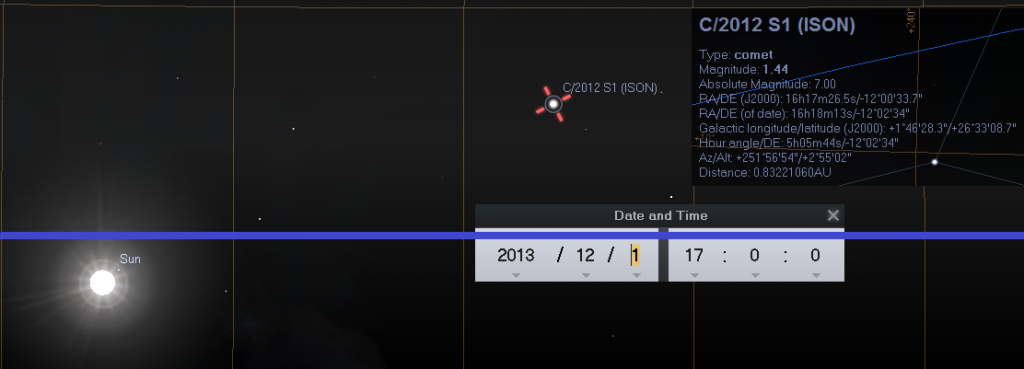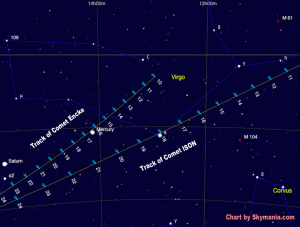Once again we have the opportunity to catch view of a comet over the next several weeks. Comet C/2014 Q2 Lovejoy is making its way through the solar system. As you may have noticed, there are several other postings about a comet Lovejoy, this one is different. Typically comets are named for the person (or group) who discovered them and this is another in a series of discoveries by Terry Lovejoy, the 5th to date.
The picture below was taken using the BRT scope on a scheduled job that completed on December 25th. This is a black and white photo at 120 seconds of exposure with a narrow field camera. On over-exposing the image, the tail comes out but without the over-exposure, only the comets nucleus is clearly visible, seen as the bright spot of fuzz in the image below. The tail extends toward the upper right of the image. Another image is included later in the post.
This comet will make its way through the solar system toward the Sun and out without a return for another 8,000 years or so. The best chance to view it will be over the next few weeks as it gets brighter and brighter arriving at its closest distance to Earth on January 7th while it will continue to brighten through its closest encounter with the Sun on January 30th. However, by that time, the comet is expected to begin dimming from our view because of its distance from us (around 120 million miles away by that point).
The image below was also captured using the BRT array by another user who managed to catch a great shot using the camera designed for taking pictures of star clusters. Also taken on December 25th, this picture is also at 120 second exposure and in normal color.
Viewing Information & Tips
To view the comet, over the next several weeks you'll want to look in the general area below the constellation Orion the Hunter. As of this posting, the comet is about 13 degrees beneath the brightest, lower right hand star in Orion known as Rigel; a blue supergiant at 772 light years away. The comet is currently in the constellation Lepus the Rabbit and will be traveling upwards relative to the horizon night over night following a path that will take it beneath the constellation Taurus the Bull and The Pleiades open cluster. I have made a few charts which may help locate the comet, they are included below.
Comet Q2 has brightened faster than many anticipated and while the comet is visible to the naked eye currently at around a magnitude of 5 (naked-eye brightness is generally accepted to be anything below magnitude 6), if you have them, definitely use binoculars to get a good look as the comet isn't very easy to spot without a dark sky and good vantage point.
The best time to view the comet will be between around 10:30 PM and 1:30 AM local time as the comet will cross due South around Midnight reaching an altitude of around the 30 degree mark. For the next few days, Orion and the comet will rise at around the same time so if you have a great view of Orion, you can probably also look for the comet. Please remember that the comet will move quickly across the constellations in the sky so adjust your viewing over the next several days as it moves towards the constellation Taurus.
Click on the image below for a larger view of the comet path over the next 15 days.
